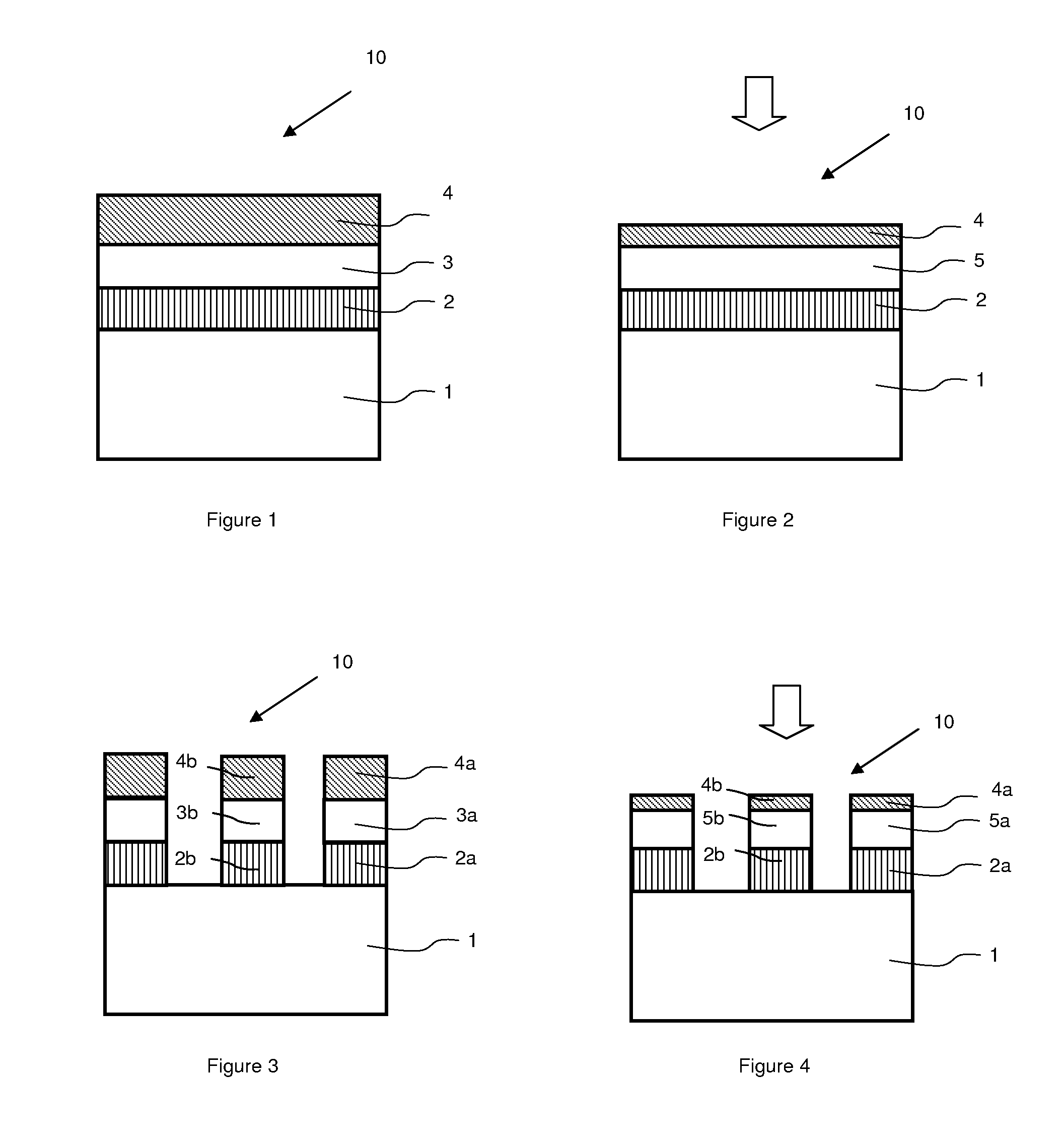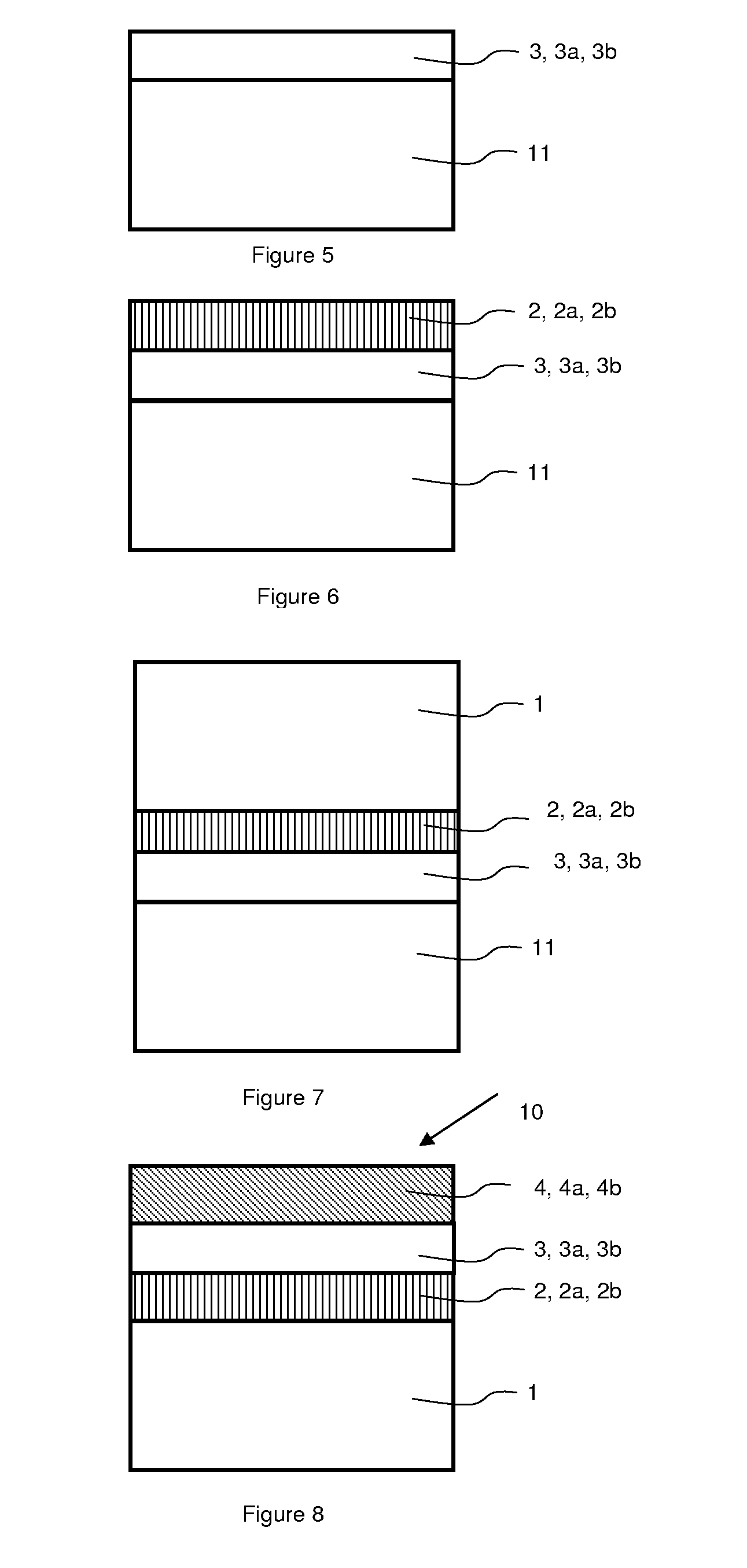Relaxation of a strained material layer with application of a stiffener
- Summary
- Abstract
- Description
- Claims
- Application Information
AI Technical Summary
Benefits of technology
Problems solved by technology
Method used
Image
Examples
Embodiment Construction
[0028]Reference will now be made in detail to the present preferred embodiments, examples of which are illustrated in the accompanying drawings and accompanying text.
[0029]For purposes of illustration, and not limitation, FIG. 1 represents a structure 10 having a layer of strained material 3 situated between a reflow layer 2 and a stiffener layer 4. Preferably, structure 10 also includes a support substrate 1 on which the reflow layer 2 lies. Substrate 1 is adapted to reinforce the rigidity of the structure 10 during heat treatment. Heat treatment is applied to bring the reflow layer 2 to a temperature equal to or greater than its glass transition temperature during which the thickness of the stiffener layer 4 is progressively reduced, as illustrated in FIG. 2.
[0030]It is noted that a material is referred to as being strained respectively in tension or in compression in the interface plane with the material on which it lays when its lattice parameter is respectively greater than or ...
PUM
 Login to View More
Login to View More Abstract
Description
Claims
Application Information
 Login to View More
Login to View More - R&D
- Intellectual Property
- Life Sciences
- Materials
- Tech Scout
- Unparalleled Data Quality
- Higher Quality Content
- 60% Fewer Hallucinations
Browse by: Latest US Patents, China's latest patents, Technical Efficacy Thesaurus, Application Domain, Technology Topic, Popular Technical Reports.
© 2025 PatSnap. All rights reserved.Legal|Privacy policy|Modern Slavery Act Transparency Statement|Sitemap|About US| Contact US: help@patsnap.com



